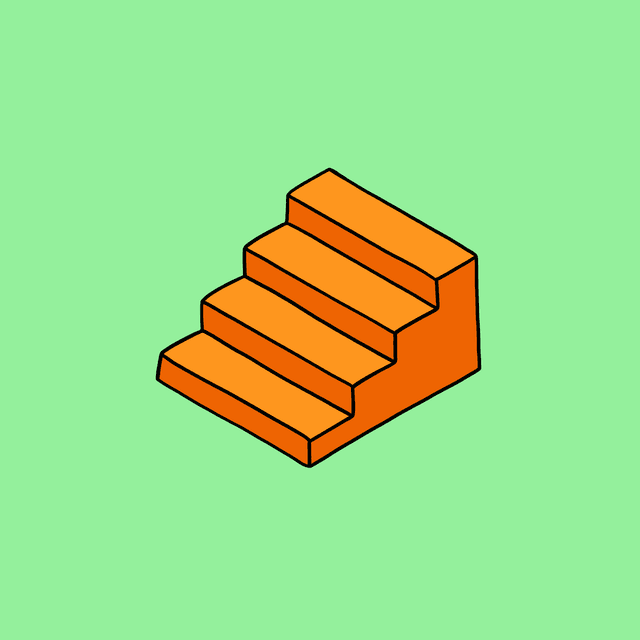Sections
Latest
Let's learn how to build sentences with a subject and an object.





In the last lesson, we learned about verb conjugation. This helps us to build simple sentences, with a subject and action, correctly:

Now, let's further develop our sentence building skills by adding in something new: an object:

You may have noticed here, an unfamiliar article: den. In fact, it is simply the article der, only declined.
So, in order to use objects correctly in our sentences, we need to learn about German declension.
In order to understand declension, however, we must first learn about the German cases.
In the German language, there are four cases:
The cases tell us what role a noun plays in a sentence:
| Case | Role | Purpose |
|---|---|---|
| nominative | subject | performs action |
| accusative | direct object | receives action |
In this lesson, we are only interested in using a subject and direct object in a sentence, so we will only focus on the nominative and accusative cases.
With the table above in mind, take a look at the sentence below:

What is the subject; the thing that performs the action (werfen / to throw)? Der Mann.
What is the object; the thing that receives the action (what is being thrown)? den Ball.
But how do we know what case is being used, without the helpful labels?
The answer: German declension tells us.
den Ball is der Ball declined. The article is being used in the accusative case, telling us that den Ball is the direct object of the sentence.
| Case | Article | Noun |
|---|---|---|
| nominative | der | Ball |
| accusative | den | Ball |
On the other hand, der Mann is not declined. The article is being used in the nominative case, telling us that der Mann is the subject of the sentence.
| Case | Article | Noun |
|---|---|---|
| nominative | der | Mann |
| accusative | den | Mann |
In English, the two sentences 'The man throws the ball' and 'The ball throws the man' have different meanings. In German, however, the two sentences 'Der mann wirft den Ball' and 'Den Ball wirft der Mann' have the same meaning. This is because, in English, the word order matters, whilst in German, each role is identified through declension.
Now that we've learned about the nominative and accusative cases, let's move on to article declension.
Let's take a look at this grammar table, to check out how the German definite and plural articles decline in both the nominative and accusative cases:
| Masculine | Feminine | Neuter | Plural | |
|---|---|---|---|---|
| nominative | der | die | das | die |
| accusative | den | die | das | die |
In both cases, most articles stay the same. The only exception is the masculine article der, that changes to den in the accusative case.
Using this table as a guide, pick the correct words to use in each sentence:
Now, let's take a look at this grammar table for indefinite article declension in the accusative and nominative cases:
| Masculine | Feminine | Neuter | |
|---|---|---|---|
| nominative | ein | eine | ein |
| accusative | einen | eine | ein |
Whilst definite articles are used to describe a noun as specific:

Indefinite articles are used to describe a noun as non-specific:

Much like in the definite article table, most of the articles stay the same. The only
exception is the masculine article ein, that changes to einen in the accusative case.
Once again, using the above table as a guide, pick the correct article to use in each sentence:
Well done! 🎉
Now, you may have noticed that the first sentence uses the noun: einen Löwen, whilst the
second uses: ein Löwe. There is an extra -n added to the noun in the first case.
This is because both the noun and the article have been declined here.
Now that we've learned about article declension, let's turn our attention to the N-declension.
In German grammar, certain masculine nouns in the accusative case decline, as well as their articles.
This is done by adding an -(e)n to the end of the noun.
| Case | Definite | Indefinite | Noun |
|---|---|---|---|
| nominative | der | ein | Löwe |
| accusative | den | einen | Löwen |
As a general rule, the masculine nouns that decline usually:
-e, -ant, -at, -ist, or -entHere is a grammar table, showing the N-declension rules for the nominative and accusative cases:
| Singular | Plural | |
|---|---|---|
| nominative | der Löwe | die Löwen |
| accusative | den Löwen | die Löwen |
So, for these certain masculine nouns, we must add the ending -(e)n in every case except for the nominative singular.
Using this table as a guide, pick the correct words to use in each sentence:
Over time, you will remember which masculine nouns require to be declined. What's important here, is to remember when and how they should decline.
Well done 🎉!
You are now using the definite and indefinite articles, and the N-declension, in both the nominative and accusative cases! Your sentences now include a subject, an action and an object.
At the moment, the subject is always a noun (the man / der Mann). However, we can also replace the noun with a pronoun; a you, or we, or they, or I.
In our next lesson, we will tackle the German pronouns. Head over, when you're ready.